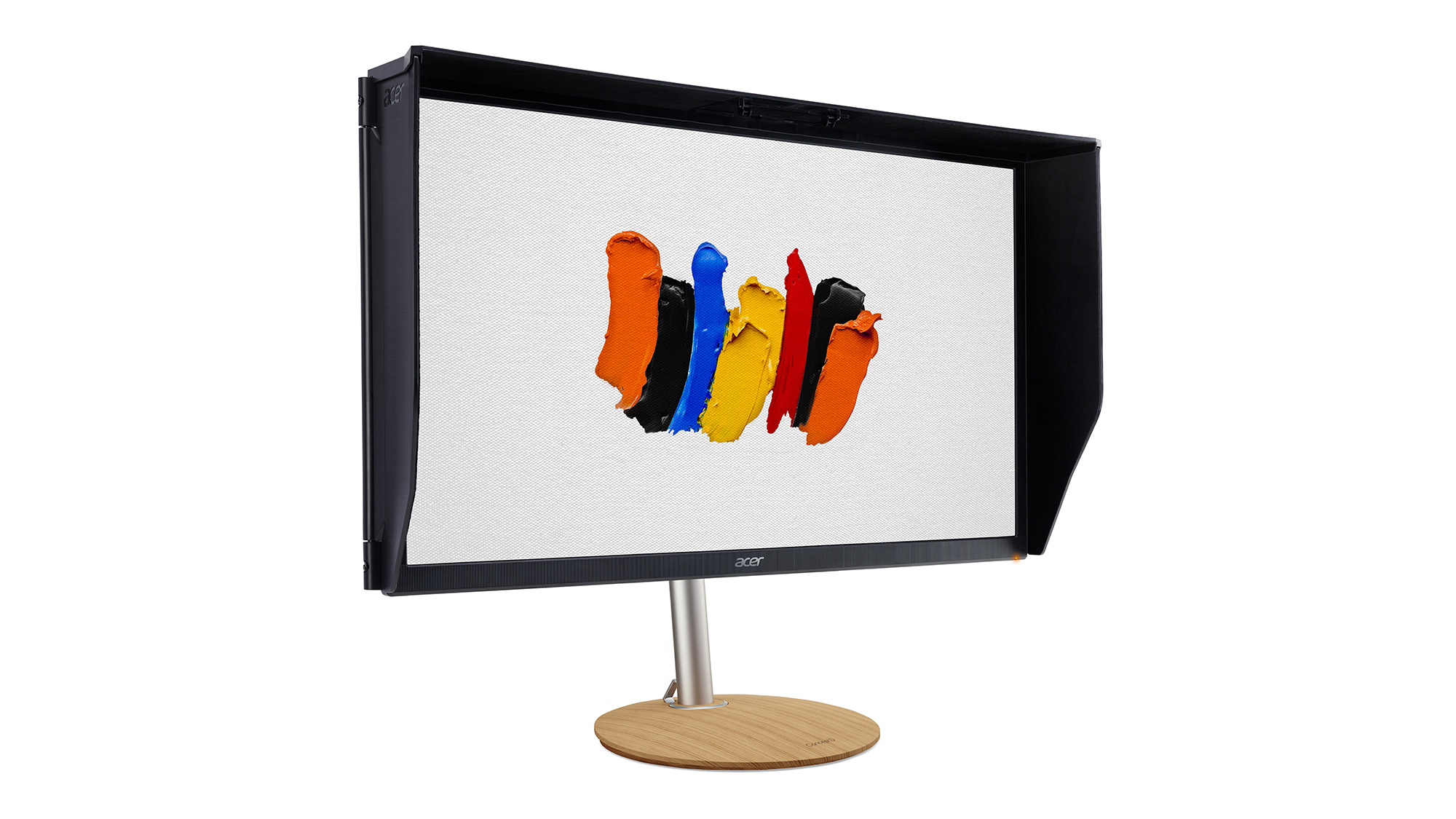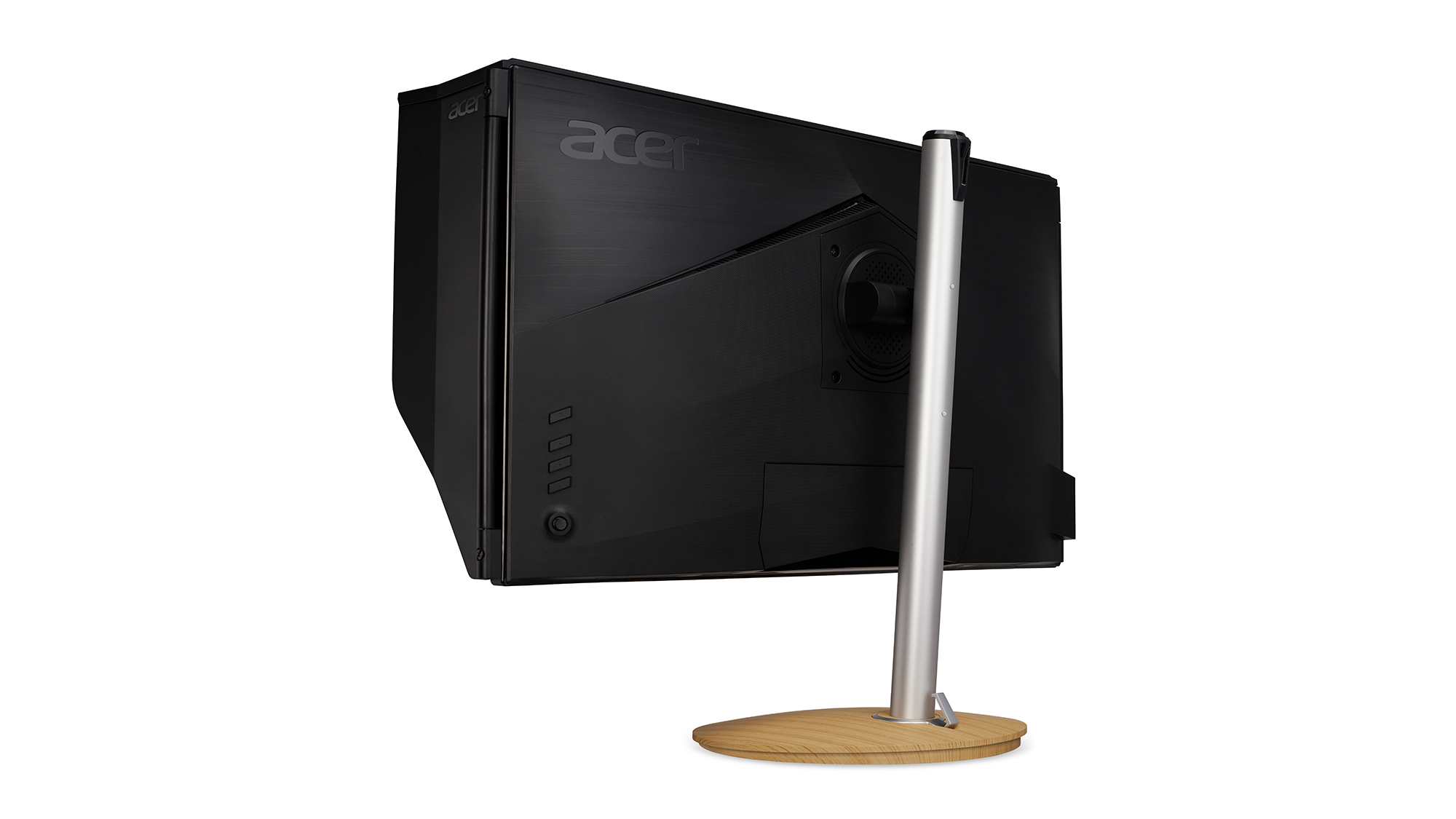Acer ConceptD CP5271UV review: A great value buy
A versatile 1440p monitor that’s as well suited to video editing and gaming as it is designing for print


-
+
Outstanding colour accuracy
-
+
Strong docking capabilities
-
+
Highly adjustable
-
-
Fiddly OSD

The word versatile is often over-used when it comes to describing IT equipment. With the Acer ConceptD CP5271UV, however, we pick the word with purpose: you will struggle to find a monitor that can slip so easily between modes for print designers, video editors, games developers and indeed games players. As an extra bonus, it even offers support for HDR600.
It’s even perfectly suited to office use, with a Gigabit Ethernet port and four USB 3.1 ports making it an ideal docking monitor when connected to a laptop over USB-C. It also delivers up to 65W of power, which is more than enough to keep most laptops charged. Alternatively, there are two HDMI ports and one DisplayPort waiting for your input.
The CP5271UV’s most obvious rival is the Eizo CG279X. Like the ConceptD, it has a 27in 2,560 x 1,440 IPS panel but switches between even more gamuts: Adobe RGB, DCI-P3, BT.2020, sRGB, BT.709 and beyond. Plus, while the Acer forces you to reach behind the screen and fiddle with a mix of shortcut buttons and joystick to switch modes, the Eizo provides the world’s most intuitive OSD.
Still, such luxuries are reflected in the screens’ prices: the CP5271UV costs £800, exactly half the Eizo’s £1,600. And when it comes to the raw quality of the panel, there’s little to separate them.
Take the Adobe RGB profile. Here, the ConceptD monitor covers 94% of the gamut out of a 94% volume with a maximum Delta E of 1.15 (the average is 0.4). Those are nigh-on identical figures to the Eizo. The main thing that separates the two screens in this regard is the colour temperature, as the Eizo tracks closer to the target 6500K with a 6552K result, while the Acer is a warmer 6060K.
Switch to DCI-P3 and the Eizo nudges ahead due to its 95% coverage with 99% volume, compared to 92% and 94% for the Acer; the volume figures refer to the colours the monitor shows outside of the measured colour space, with the gap between the two numbers effectively demonstrating any overspill. Here, both those figures are close enough to be negligible, especially when backed by such good colour accuracy once again – the Acer at a maximum 1.11 Delta E, the Eizo at 1.06.

RELATED RESOURCE

How monitors deepen your employee experience and support your distributed workforce
Drive business outcomes by empowering, enabling, and inspiring employees with the right monitors
The Acer also offers a calibrated sRGB mode, but it’s tucked away under the “Calibration 2” profile, which is one of two presets you can reprogram by downloading Acer’s Color Calibrator software. This simple app works with colorimeters such as the X-Rite i1 Display Pro, and within a couple of minutes you can tune your monitor for any of the three main gamuts with a choice of 150, 200 or 250cd/m2. It’s reassuring to see how foolproof the process is, even if the Eizo has the extra trick of a built-in calibrator that you can tell to periodically check without any user intervention.
There’s one more area where the Eizo wins, and that’s display uniformity. We measured the brightness and contrast of both monitors across 25 grids, and where the Eizo’s brightness deviated by an average of 4.7%, the Acer did so by 11.3%. That’s not a great result, with poor performance in each of the corners in particular. This isn’t a reason not to buy the Acer – few monitors are as uniform as the Eizo – but it does mean that for crucial colour work you’re better off focusing on the centre of the screen.
Still, this is one of the few areas where we can criticise this display. Plus it has advantages over the Eizo, most notably that it can play games so smoothly. Over a DisplayPort connection, it can reach 170Hz at 1440p, and it supports adaptive sync while boasting a 1ms response time if you select the “overdrive” setting. Its HDR600 support means it’s better suited than the Eizo for editing HDR video as well, and even in non-HDR mode, it pushes up to a super-bright 480cd/m2 compared to 400cd/m2 for the CG279X. Did we mention how versatile this monitor is?
The stand carries on the panel’s flexible skills, with a full 360° of swivel, tremendous 180cm of height adjustment and the ability to twist gracefully into pivot mode. It also comes bundled with a monitor hood and includes a stylish wooden finish that makes this the perfect partner for Acer’s ConceptD workstation.
Despite a couple of weaknesses – we should also acknowledge the Acer’s three-year return-to-base warranty, which pales in comparison to the five years of on-site cover provided by Eizo – the Acer ConceptD CP5271UV is a match for its far more expensive competition, and even bests it in a couple of areas. If you’ll take advantage of its many skills, it’s a great buy.
Acer ConceptD CP5271UV specifications
| Screen size | 27in |
| Screen resolution | 2,560 x 1,440 |
| Screen technology | IPS panel, 8-bit plus FRC panel (1.07 billion colours), adaptive sync support, HDR600 support |
| Screen refresh rate | Up to 170Hz, 1ms response time |
| Video inputs | DisplayPort 1.4 (HDCP 2.2), 2 x HDMI 2 (HDCP 2.2), USB-C (Power Delivery up to 65W) |
| Speakers | 2 x 4W speakers |
| Ports | Gigabit Ethernet port, 4-port USB 3.1 hub |
| Adjustability | Pivot, -180° to 180° swivel, -5° to 35° tilt, 180mm height adjustment |
| Dimensions | 629x 307 x 541-721mm |
| Weight | 6.6kg |
| Warranty | 3yr RTB warranty |
Get the ITPro daily newsletter
Sign up today and you will receive a free copy of our Future Focus 2025 report - the leading guidance on AI, cybersecurity and other IT challenges as per 700+ senior executives
Tim Danton is editor-in-chief of PC Pro, the UK's biggest selling IT monthly magazine. He specialises in reviews of laptops, desktop PCs and monitors, and is also author of a book called The Computers That Made Britain.
You can contact Tim directly at editor@pcpro.co.uk.
-
 Westcon-Comstor and Vectra AI launch brace of new channel initiatives
Westcon-Comstor and Vectra AI launch brace of new channel initiativesNews Westcon-Comstor and Vectra AI have announced the launch of two new channel growth initiatives focused on the managed security service provider (MSSP) space and AWS Marketplace.
By Daniel Todd Published
-
 Third time lucky? Microsoft finally begins roll-out of controversial Recall feature
Third time lucky? Microsoft finally begins roll-out of controversial Recall featureNews The Windows Recall feature has been plagued by setbacks and backlash from security professionals
By Emma Woollacott Published
-
 The UK government wants quantum technology out of the lab and in the hands of enterprises
The UK government wants quantum technology out of the lab and in the hands of enterprisesNews The UK government has unveiled plans to invest £121 million in quantum computing projects in an effort to drive real-world applications and adoption rates.
By Emma Woollacott Published